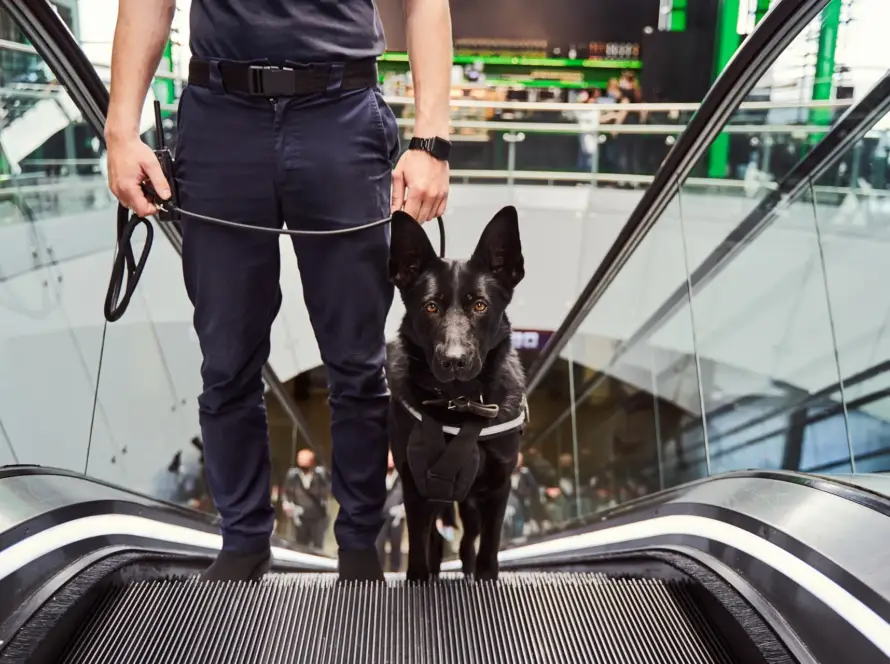Introduction
Shoplifting is a growing concern for retailers, affecting businesses of all sizes. With evolving tactics and increasing cases, theft prevention has become a critical aspect of retail operations. While some incidents involve individuals attempting to steal small items, others are part of large-scale, organized crime operations. The consequences of shoplifting go beyond financial loss, impacting store security, employee morale, and overall customer experience. To combat this issue effectively, retailers must adopt a multi-layered security approach, integrating technology, professional services, and strategic policies.
Understanding the Rising Threat of Shoplifting
Retailers worldwide are facing an increasing challenge—shoplifting. What was once considered petty theft has evolved into an organized and sophisticated crime. From individuals engaging in opportunistic theft to organized retail crime (ORC) rings executing large-scale heists, shoplifting is causing significant financial damage to businesses. According to industry reports, retailers are losing billions annually due to theft-related losses. This growing issue demands an urgent and well-planned response.
The Financial and Operational Impact of Shoplifting
Shoplifting is not just about minor inventory losses; it has far-reaching effects on a retailer’s bottom line. Beyond the direct financial losses, retailers must also deal with increased costs related to security investments, higher insurance premiums, and loss prevention measures. Additionally, frequent theft incidents can lead to a decline in employee morale and negatively impact the overall shopping experience for genuine customers.
The impact extends beyond individual stores. Shopping centres and malls experience increased crime rates, which can drive away potential customers. The need for shopping centre security services is now greater than ever, as retailers strive to create a safe and secure shopping environment for customers and employees alike.
Understanding the Methods Used by Shoplifters
To combat shoplifting effectively, retailers must first understand the various tactics employed by thieves. Some of the most common methods include:
- Concealment: Shoplifters hide items in clothing, bags, or strollers to sneak them out undetected.
- Price Tag Switching: Some criminals swap price tags to pay less for expensive products.
- Return Fraud: Fraudsters return stolen merchandise for cash or store credit.
- Organized Retail Crime (ORC): Groups of thieves work together to steal large quantities of merchandise, sometimes using lookouts and escape plans.
- Distracting Employees: Some shoplifters create distractions or diversions to shift staff attention away from the theft.
Understanding these methods is the first step in devising an effective theft prevention strategy.
How Retailers Can Respond Effectively
Effectively addressing shoplifting requires a combination of preventive strategies and active deterrence measures. Retailers must adopt a multi-faceted approach that includes advanced security systems, professional security services, and employee training. By implementing a well-structured security plan, businesses can minimize financial losses, create a safer shopping environment, and maintain customer trust. A strong security presence, whether through surveillance technology or trained personnel, serves as a deterrent, ensuring that criminals think twice before attempting theft.
Here are some key strategies retailers can implement to respond effectively:
Implementing a Retail Store Security System
One of the most effective ways to prevent shoplifting is by deploying a retail store security system. Advanced surveillance technology, electronic article surveillance (EAS) tags, and access control measures can significantly reduce theft incidents. Security cameras placed strategically around the store help deter criminals and provide crucial evidence in case of theft.
Key components of an effective retail security system include:
- Surveillance Cameras: High-resolution CCTV cameras for monitoring in real-time.
- EAS Tags: Electronic tags attached to high-value merchandise that trigger alarms when removed improperly.
- Access Control Systems: Restricting unauthorized access to storage and high-risk areas.
- Alarms and Sensors: Motion detectors and anti-theft alarms for enhanced security.
A well-integrated security system helps retailers maintain vigilance and prevent potential shoplifting incidents.
Hiring Professional Retail Store Security Services
Retailers must also consider hiring retail store security services to enhance their theft prevention strategies. Trained security professionals provide an added layer of protection that technology alone cannot achieve. Security officers are trained to detect suspicious behavior, intervene during theft attempts, and respond effectively to security breaches.
Benefits of hiring security personnel include:
- Real-time Monitoring: Security guards actively patrol the store, identifying and addressing suspicious activity.
- Immediate Response: Quick action to apprehend shoplifters before they exit the premises.
- Customer Assistance: Providing assistance to shoppers while maintaining a visible security presence.
Strengthening Shopping Centre Security Services
For businesses operating within malls or shopping centers, shopping centre security services play a vital role in ensuring the safety of retailers and customers. Many retail thefts occur in parking lots, entrances, and shared spaces within shopping malls. Coordinating with mall security teams ensures a more comprehensive approach to loss prevention.
Effective security measures at shopping centers include:
- Increased Patrols: Regular foot and vehicle patrols to monitor high-traffic areas.
- Collaboration with Store Owners: Sharing intelligence on suspicious individuals or recurring theft patterns.
- License Plate Recognition (LPR) Systems: Monitoring vehicles entering and leaving the premises to track potential suspects.
By reinforcing security in shopping centres, retailers can significantly reduce theft-related losses and create a safer retail environment.
Partnering with Security Guard Services
Beyond hiring in-house security personnel, retailers can also benefit from security guard services provided by professional agencies. These services ensure that businesses have highly trained personnel equipped with the skills to handle various security threats. Trained security guards can monitor store entrances, conduct bag checks, and prevent unauthorized access to restricted areas.
Advantages of professional security guards include:
- Enhanced Theft Prevention: Immediate deterrence to potential shoplifters.
- Crowd Control: Managing customer flow during peak hours or sales events.
- Emergency Response: Handling security incidents, medical emergencies, and other unforeseen situations.
Employee Training and Awareness Programs
While security systems and personnel play a crucial role, employee awareness is equally important. Staff should be trained to identify suspicious behavior, follow proper theft prevention protocols, and engage with customers in a way that discourages shoplifting.
Effective employee training includes:
- Recognizing suspicious body language and behaviors.
- Maintaining a presence in high-risk areas of the store.
- Engaging with customers to deter potential shoplifters.
- Following proper reporting procedures in case of theft.
Adopting a Customer-Centric Security Approach
While preventing shoplifting is essential, retailers must ensure that security measures do not alienate genuine customers. A customer-friendly security approach ensures that shoppers feel comfortable and safe while shopping.
Retailers should focus on creating a welcoming atmosphere by:
- Training security personnel to assist rather than intimidate customers.
- Implementing security measures that blend seamlessly into the shopping experience.
- Encouraging a culture of honesty through anti-theft awareness campaigns.
“Shoplifting remains a persistent challenge for retailers, but with proactive security measures, advanced technology, and well-trained personnel, businesses can significantly reduce losses. Investing in a retail store security system, hiring retail store security services, reinforcing shopping centre security services, and partnering with security guard services all contribute to a safer and more secure shopping environment. Additionally, empowering employees with the right training and adopting a customer-centric approach can help retailers combat theft without compromising the shopping experience.
For businesses seeking reliable security solutions, Prowess Security offers comprehensive services tailored to the unique needs of retail stores and shopping centres. With a team of highly trained security professionals, cutting-edge surveillance technology, and customized security strategies, Prowess Security ensures maximum protection for businesses. Their expertise spans across theft prevention, loss control, crowd management, and emergency response, making them a trusted partner for retailers looking to create a safe and secure shopping environment for customers and employees alike.”


